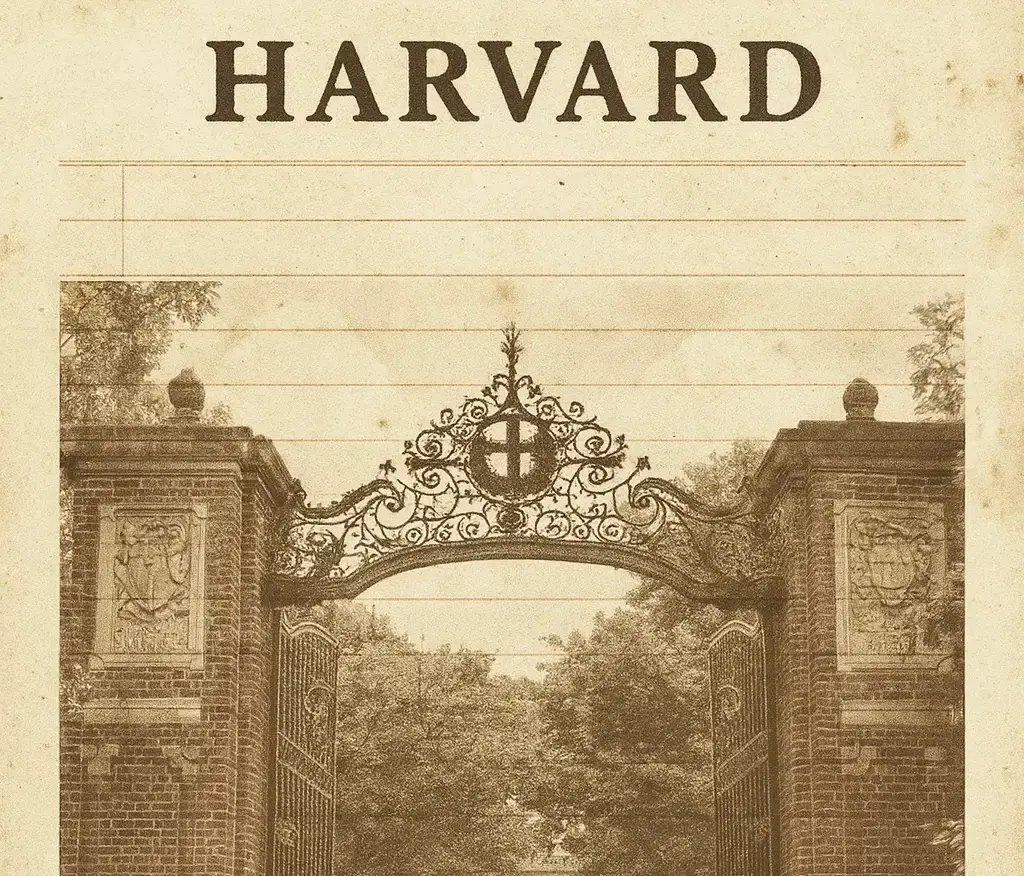Harvard has always been a symbol—of prestige, of promise, of access, of choices. The school is synonymous with the idea of academic rigor so intense that only the most capable students survive and thrive. The joke for generations has been that getting into Harvard is the hard part; once you arrive, you can float. But in 2025, that joke is no longer just a joke. It’s data. It’s policy. It’s concern. And it’s a mirror held up to the American understanding of education, excellence, fairness, and the shifting meaning of what an A even is.
A recent report by the university’s dean of undergraduate education—25 pages of institutional soul-searching—reveals a tension at the pithy of Harvard’s academic culture. Grades indicating an proliferation upward, GPAs are clustering at the top, and the distance between merely strong and truly exceptional academic performance is shrinking. This isn’t a whisper anymore. It’s statistically loud. And Harvard, the school that often defines the arc of American academic trends, is suddenly in a position it rarely occupies: worrying that it has made things too easy.
stir
According to the Wall Street Journal, nearly 60% of all grades issued last year at Harvard were A’s. That’s more than double the rate from the mid-2000s. In the 1980s, a student leaving Cambridge with a 3.83 GPA would have been not just impressive but extraordinary. Today, that number is the median.
A median GPA is the midpoint—half of students are above it. And if half of Harvard students are clocking in above 3.83, something in the grading ecosystem has changed, and dramatically.
The most striking detail is that the academic load hasn’t fundamentally shifted. Harvard students aren’t spending radically more time studying. The average is 6.3 hours per week outside of class—essentially identical to the time logged nearly two decades ago, when grade inflation was already a topic. If outputs have skyrocketed but inputs remain constant, the only logical conclusion is that the grading scale itself has loosened.
Universities hate to admit this. Grade inflation is a political subject within higher education. It touches everything: institutional branding, job placement, student morale, alumni expectations, donor sentiment, and competition with peer institutions. Harvard’s struggle is not isolated. It’s part of a national (and global) shift toward grades that function more like encouragement than evaluation.
idea
Harvard is not just a university. It’s an economy of ambition. Students enter this world with Photoshop-sharp resumes, years of academic overachievement, summer internships at research labs, and extracurriculars with professional-level portfolios. The admissions office sifts through tens of thousands of straight-A students to build a class of 1600.
Inside that context, perhaps it’s predictable that a high achiever will continue to achieve.
But something else is happening. Grades have become both the currency and the language of validation. Students enter elite institutions expecting excellence. Professors, for their part, may feel pressure—implicit or otherwise—to affirm students’ expectations, maintain departmental harmony, or compete for enrollment in specific courses. The threat of negative evaluations, which professors increasingly rely on for tenure or career progression, can quietly influence grading philosophy.
The outcome is a softening of academic boundaries: a world where “good work” and “exceptional work” blur not on merit but on practice.
culture
Grade inflation is not just an institutional choice. It is a cultural artifact.
The last two decades have reshaped the American relationship to education. Students entering Harvard in 2025 grew up in an era where anxiety, burnout, and the pressure to perform have been normalized from childhood. They are the generation of standardized testing, competitive extracurricular stacking, AP overload, and résumé-maximizing at 14. They arrive at Harvard already wound tight, already exhausted, already primed for performance. To such students, grades often feel less like evaluation and more like survival.
Professors, aware of this context, may not want to add to the psychological burden. The pandemic further complicated this landscape, softening grading policies nationwide and accelerating the upward drift of leniency. Remote learning blurred expectations and forced faculty to reconsider what academic rigor looks like when the world outside is chaotic.
Once a system moves in one direction—toward generosity—it is notoriously difficult to move it back.
contra
What makes Harvard’s situation unique is that the institution’s prestige depends on exclusivity and difficulty—yet the student body is now pushing back against the idea that grading should tighten. Their argument is simple: if Harvard admits only top-tier students, isn’t it logical that top-tier students earn top-tier grades?
This is where data and sentiment collide.
A Harvard senior quoted in the WSJ summarized the feeling succinctly: “You admitted these students because they have straight A’s, and now they’re getting a lot of A’s, and it’s, like, ‘This is a problem?’”
This is not entitlement. It is a genuine philosophical debate about what fairness looks like when an institution self-selects for excellence.
From the student perspective, the logic is airtight. If Harvard builds a class of academic Olympians, why wouldn’t those Olympians continue performing at the highest level? Should they suddenly become B students simply because the environment got harder?
But from the university’s standpoint, something vital is at risk: the meaning of distinction.
shift
A grading scale is supposed to differentiate levels of work, not confirm expectations. A world where 60% of grades are A’s means the other 40% must encompass all other performance categories—good, average, poor, and everything in between. This inversion collapses the nuance of evaluation.
Graduate schools and employers rely on transcripts to detect patterns of skill, dedication, and intellectual sharpness. If nearly everyone at Harvard graduates with a transcript full of A’s, the transcript loses predictive power. Recommendation letters, personal statements, and extracurricular work become ever more important—but these too inflate when everyone is excellent.
This shrinking room for distinction affects not only academic recognition but also scholarship placement, research opportunities, postgraduate fellowships, and the constellation of accolades that Harvard students traditionally compete for.
When an A is the norm, the premium shifts potentially to other signals of elite performance—signals that often correlate more strongly with privilege, networks, or access to resources.
This is where grade inflation subtly reinforces inequity.
gen
Students, understandably, resist being the subjects of a sudden recalibration. They worked for years to reach Harvard. They have been raised in an academic culture where achievement is measured in perfection. Once inside the institution, they want acknowledgement, not recalibration. Many feel that reducing the prevalence of A’s is a retroactive punishment—a kind of bait-and-switch.
There is also a psychological dimension: for this generation, grades are tied to self-worth, identity, and future possibility. They compete for jobs in an economy where credentials still matter. They compete for spots in graduate programs that rely heavily on GPA. Changing the rules midway through their education feels deeply unfair.
So even though Harvard’s administration wants to restrict the inflation, the students are skeptical—and their skepticism reveals the long tail of an educational culture that overemphasizes performance.
fwd
The dean’s report signals that Harvard intends to shift direction. But cultural inertia is extremely strong. Grade inflation has been accelerating for decades, and cultural impetus continue to push in its favor.
Tightening grading may ultimately require more than policy adjustments. It may require rethinking academic labor expectations, rewriting course evaluation systems, and even restructuring how departments define learning outcomes.
The real challenge will be transparency. Students must trust the system. Professors must trust the administration. Employers must trust the outcomes. That trust will only emerge if Harvard articulates clear, consistent, public-facing standards that explain what an A means in 2025—and what it will mean in 2030.
impression
Harvard’s issue is a microcosm of the larger American academic landscape. The question isn’t either elite students are capable of producing elite work.
If everyone gets an A, the grade no longer represents excellence. It represents participation at a high-achieving institution.
The country is grappling with the same tension: students overworked, systems softened, expectations inflated, and the definition of “rigor” shifting with each generation.
No comments yet.







